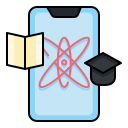Changing the Way We Teach: VR in Modern Education
Virtual Reality (VR) is rapidly transforming the educational landscape by providing immersive, interactive experiences that go beyond traditional classroom instruction. This innovative technology has started to play a crucial role in modern education, bridging gaps between theoretical concepts and real-world application. As educators and institutions adapt to new challenges and opportunities, VR stands out as a promising tool that redefines how we approach teaching and learning in the 21st century.
The Promise of Immersive Learning
Enhanced Student Engagement
Traditional teaching methods often struggle to keep students fully engaged, especially in subjects that require visualization or practical application. VR changes this dynamic by placing students at the center of the learning experience. Instead of passively receiving information, learners actively participate in virtual scenarios, which results in heightened curiosity and sustained attention. This level of engagement not only makes lessons more memorable but also nurtures a deeper connection to the subject matter.
Bridging the Theory-Practice Gap
One of the perennial challenges in education is helping students move from understanding abstract concepts to applying them in real-world situations. VR environments facilitate this transition by offering interactive simulations, such as virtual laboratories for science or historical recreations for social studies. Students can experiment, make mistakes, and repeat processes, all within a safe and controlled space. This hands-on approach encourages critical thinking and reinforces theoretical knowledge through practical application.
Personalized Learning Experiences
Every learner has unique preferences, strengths, and learning speeds. VR technology enables educators to customize experiences according to individual student needs. Adaptive VR modules can adjust difficulty levels in real time, provide instant feedback, and offer various pathways for learning. This personalization empowers students to take ownership of their education, advancing at their own pace and revisiting challenging concepts until mastery is achieved.
Reaching Remote and Underserved Communities
Many students around the world lack access to qualified teachers, updated materials, or diverse educational opportunities. VR can bridge these gaps by delivering interactive content to virtually any location with the necessary hardware and connectivity. Remote learners can participate in virtual classrooms, field trips, or skills training that would otherwise be out of reach. As a result, VR helps to level the playing field, promoting greater educational equity.
Supporting Diverse Learning Needs
Inclusive education requires accommodating students with varying abilities and learning styles. VR can be designed to cater to specific challenges, such as providing audio descriptions for visually impaired students or customizable interfaces for those with motor difficulties. By offering a variety of interaction modes, VR supports differentiated instruction, ensuring all learners receive the support they need to thrive academically and socially.
Cultural Exchange and Global Perspectives
Virtual reality makes it possible for students to experience cultures, languages, and environments far beyond their own community. Through immersive VR scenarios, learners can engage in simulated international exchanges, visit world heritage sites, or collaborate with peers from other countries. This exposure broadens their worldview, fosters empathy, and enhances cross-cultural communication skills that are vital in an increasingly interconnected world.
Transforming Teacher Roles and Pedagogy
Facilitators of Experiential Learning
In a VR-enhanced classroom, teachers transition from traditional sources of knowledge to facilitators of learning experiences. They guide students through virtual activities, encourage critical reflection, and help bridge the gap between digital simulations and real-world understanding. This shift requires a new mindset, one that embraces creativity, problem-solving, and the ability to orchestrate engaging, technology-driven lessons.
Curriculum Innovation and Content Creation
With VR, the static textbook-based curriculum is giving way to dynamic, interactive modules. Teachers now participate in designing or curating immersive content tailored to curricular standards and student needs. This process involves collaboration with technologists, subject matter experts, and students themselves. The ability to adapt and innovate curricula ensures that learning remains relevant, up-to-date, and stimulating in an era of rapid change.
Continuous Professional Development
Mastering VR as an educational tool demands ongoing professional development for teachers. Training programs focus on both technology usage and pedagogical strategies for integrating VR effectively. Educators must stay informed about the latest advancements and best practices, while also developing critical thinking about VR’s ethical and practical implications in the classroom. This commitment to lifelong learning is essential for maximizing the benefits of immersive teaching.
